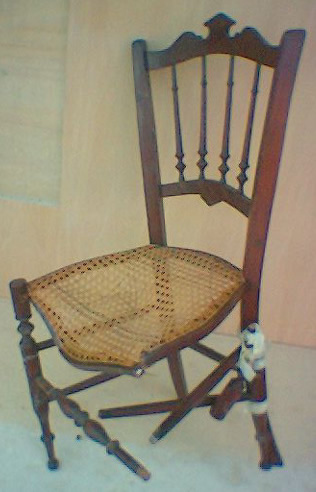
When a leg breaks
In the case of a horizontal splitting proceed with a drill and wood drill, a hole is made in each of the two broken leg pieces, obviously in the central part, taking care that the hole is of suitable diameter for the measurement of the leg (it is therefore much wider in the case of massive legs).
It is also necessary that the two holes are perfectly aligned (but we must not forget that, if necessary, one of the two can also be slightly ovalized to obtain a perfect coincidence of the two parts).
Then, in a special wooden rod, a pin is cut that has the overall length of the two holes, but the diameter slightly higher. You introduce half of the spine, first spread with glue, in the hole of the leg remained attached, making it penetrate to the bottom eventually with the help of a hammer.
Then glue the two surfaces of the broken foot, taking care of the contours, and place the stump of the foot on the part of the spine "free, inserting it with the foresight that there are no differences in level between the two parts (the junction must be perfect.) The glue is then left to dry for at least twenty-four hours and, at the end, if necessary, is finished with a little paint or with a wax polish.
If the fracture is instead of an oblique type, the repair is a bit more complex. First of all, glue the surfaces of the two broken pieces and make them fit perfectly, then tighten them with a vice and allow the glue to dry for at least twenty-four hours.
Then, with a drill and a bit of at least 8 millimeters, two holes are drilled perpendicular to the foot, which pierces it completely. It then fits into the holes of the carpenter's glue and introduces two pins (like the ones used earlier) that have the same diameter as the holes and a length of less than 3-4 millimeters to the thickness of the broken leg. Even the caps must be previously sprinkled with glue. Once the work is finished, the glue is dried, then the small cavity left in the wood is filled with stucco, at the ends of the stoppers, and finished with sandpaper to finish with a little paint or a wax polish.